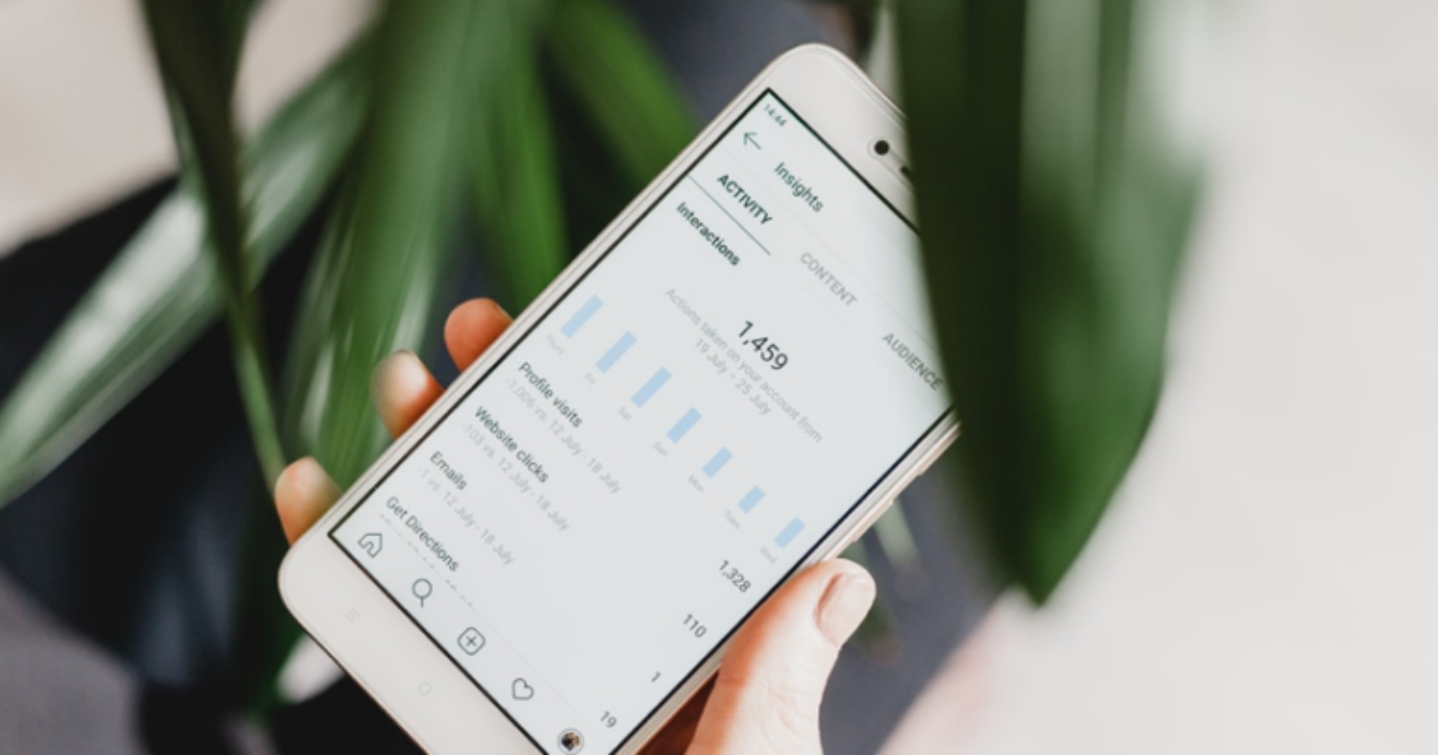You may think that your business is too small, or too niche to benefit from social media. Wrong.
Social media is valuable for businesses of any size or industry and has a direct impact on sales and your bottom line. Despite this, only 57% of SMEs use social as part of their marketing strategy.
We know that as an SME you’re probably short on time, resources and budget. That’s why we’ve made this article full of actionable tips on how to make social media enhance your business.
Why is social media important for SMEs?
There are many reasons why social media should be part of every SME’s marketing plan. When done right, social media can boost brand awareness, engagement, and sales.
How can social media do this, you ask? For these top 10 reasons:
- It’s where your customers are
- It’s where your competitors are
- It helps you connect with your customers by opening another channel of communication
- It helps you learn about what your customers want
- The running cost is lower than traditional marketing
- A strong social media presence drives brand loyalty
- Your messages will reach more engaged, relevant people
- It helps you to find and reach new customers
- It establishes your authority in your industry
- You will get more sales
- Promote content? A point about ensuring your content marketing reaches its audience?
However, if done wrong, social media can quickly become a drain on time and money, especially for SMEs with less time and money to invest.
So, let’s discuss how you and your SME can get the most out of social media, and avoid making costly and time wasting mistakes.
Best social channels for SMEs
It’s tempting to sign up to every social network and start posting sporadically on each channel. However, this scattergun approach isn’t advisable. Ultimately, it’s a huge drain on your time, and it also spreads your efforts and messaging thin.
Our suggestion is to focus on one or two platforms first. Once you’ve learned the ropes and built up an engaged audience, you can then think about joining another channel.
The next question is, which social media channel should your business be on? First things first, start by asking yourself the following questions:
- Are you B2C or B2B?
- Who’s your target audience? How old are they? What do they enjoy doing?
- What’s your overall goal? Is it brand awareness? Gathering leads? Sales?
After you’ve answered these questions, you’ll be ready to decide which platform to use. To help you out, we’ve created a handy guide below.
Which social media platforms to use?
Facebook Facebook is the most popular social media channel with the largest user base. There are lots of options for raising brand awareness, engagement and boosting sales. It’s also the platform that’s home to live video streaming (very big for 2019!). Plus, they have one of the best targeting features for paid ads.
YouTube: A video-sharing platform with over a billion users. Video is huge and it it’s only getting bigger. If you have the time and the resource to make video part of your marketing strategy, then YouTube is the place to be.
Twitter: The platform with high engagement and a popular tool for social customer service. A great place to share short, succinct updates and photos.
Instagram: A visual social media platform based entirely on photo and video posts. Although demographics veer towards younger users, older generations are starting to embrace it more and more. A great platform to use for those who have products or services to show off.
Pinterest: A social bookmarking site that focuses on users ‘pinning’ images to their Pinboards. It’s essentially a virtual mood board. Pinterest is popular amongst soon-to-be-brides, designers, foodies, fashionistas, and anyone in search of the latest trends.
Our Pinterest activity for one of our interior companies gets the brand in front of 50,000 people a month – great reach for very little spend!
LinkedIn: The largest social media network for professionals. LinkedIn is a business-focused network that allows you to reach and connect with others in your industry and target audience. It’s the place to be for B2B SMEs.
Snapchat: This platform mainly consists of people under the age of 21. So, if that’s your market, it’s a key platform to use. However, if the young demographic doesn’t make up the majority of your audience, we believe Snapchat’s too time-consuming to use.
Remember, the key is to be where your audience is. Do your research and don’t assume that they’ll be on a certain channel just because you personally use it most.
If your target audience doesn’t use a social media platform, then there’s no point spending time building up a social presence.
Social media tips for SMEs
Once you’ve chosen your objectives and your channel, it’s time to get down to the nitty-gritty of building and running your social accounts.
We know how daunting this can be at the beginning. So, here are some actionable tips to get you started.
Your first point of call should be to decide on your objectives. Ask yourself: what do you want to achieve from social media?
- Find new customers?
- Make sales?
- Improve brand loyalty?
Without such objectives, you have no way of knowing what you’re trying to achieve with your social media posts.
These objectives don’t need to be as specific as reach 20,500 people. Goals we often recommend to clients are along the lines of:
- Grow engagement
- Improve brand recall
- Increase reviews or testimonials
Note: Increasing following is always on people’s minds when it comes to social media campaigns. While we recognise that it’s important to grow your audience, we believe the focus should be on growing a high quality and engaged audience.
Optimising your social media profiles
Before you start your social media activity, you must optimise your channel profiles.
From your logo to graphics, descriptions to posts, your social media channel needs to reflect your brand and website seamlessly.
Most channels allow you to add a header image and description, and all will need a logo. Ensure these elements truly reflect your brand.
Below is an example of how our client, Permagard seamlessly matches their social media profiles with their brand:
Our top tips to ensure you do this are:
- Create an online presence that’s a perfect representation of who your brand is. This is where your tone of voice document comes in.
- If you’re a location business e.g. a shop, theatre, venue, add your address to your Facebook profile so that people can check-in when they visit you. Each time someone does that, it’s free advertising for you since their friends will see their check-in.
- Research the competition. It’s a great way to see what’s working, and more importantly, what’s not working. Have a look at the kind of questions people are asking. What are people saying in comments?
- Also look at which of your competitor’s posts, videos and images get good engagement. Remember you don’t want to copy them – but instead find inspiration in their successes and failures.
- Create real, genuine connections with social media followers. Not sure how? Check out our guide How to Win at Organic Social Media.
Make your social media work smarter, not harder
We know that time and resource restrictions are the main reasons why SMEs are reluctant to invest in social media in the long term.
That’s why we’ve come up with these tips that will help you get more from your time:
- Schedule content in a block once a week using platforms such as Tweetdeck and Hootsuite.
- During the week, log into social media for 15 minutes in the morning and 15 minutes after lunch to respond to comments, answer questions and reach out to your audience. This could be following potential customers, engaging in groups etc.
- The key with social media is to remember that their algorithms reward posts that have interaction. So, by responding and engaging with your audience, the more visibility your post will have.
- To make sure that your posts reach the maximum number of people, run an audit as to when most of your audience is online. Use tools such as Facebook Insights, Instagram Insights, and Tweroid to identify when your content will reach the most people.
- Keep an eye on what your competitors are posting and use native social analytics tools. This way you’ll be able to easily identify which types of content resonate best with your audience e.g. video, images, long-read articles. To get the best interaction, spend your time making similar content.
- Repurposing content is a great way to get the most out of the time and effort it took to create the piece. Studies show that companies that regularly reuse blog content see up to 50% more traffic. For maximum reach, repurpose and reshare content every week. For more information on how to reuse content, check out our guide here.
- Including images in your posts is a great way to get more engagement. Colourful graphics are eye-catching and also ensure that your posts take up more valuable space in the feed. If you don’t have a large image bank of photos to use, don’t worry. Use tools such as Canva to create your own graphics and infographics. As time goes on and engagement grows, there’s a good chance that you will be tagged in more User Generated Content (UGC).
- Using the right tools is key to making the most of your limited time when it comes to social media management. Here is our list of websites and tools we use on a daily basis:
- Tweetdeck for Scheduling
- Hootsuite for Scheduling
- Canva for Graphic creation
- Lumen for Video creation
Make social media part of a multi-channel strategy
At Loom, we aim to get all channels working harmoniously together to achieve the overall digital marketing goals of our clients. Social media plays a big role in joining all the channels together. Below are some ways you can use social media to join the digital marketing dots:
- Listen to what your audience is talking and asking about on social media can feed this directly into your content strategy & SEO.
- Promote your content through your social media channels and serve it to specific audiences.
- Use your demographics data in analytics to inform your paid activity on social media.
- Pull out terms from popular social media posts and feed into PPC copy.
Tips for social advertising on a small budget
Done right, paid social activity can support your general, organic social media activity. It can amplify your reach and get your brand in front of a targeted audience.
But be careful – it can also be a black hole for your budget if not managed carefully.
As with every marketing strategy, before you start a paid social campaign, you need to outline your goals and objectives.
Every business’ goals will be different, but by using your marketing funnel (as seen below) you will be able to identify key areas for your business These may result in goals such as:
- Increase brand awareness
- Educate your audience
- Increasing conversions
- Increasing loyalty
Types of paid social media campaigns
Paid social media campaigns can be split into three sections:
- On-going campaigns
These are campaigns such as brand awareness and remarketing ads that run every day. They are often managed with a daily budget. These ads should be your first point of call.
- Campaign
These are campaigns such as sale announcements and news or content promotion and run for a set amount of time. These are often managed with a lifetime or campaign budget.
- Sequential
Sequential Ads use a series of ads, normally two or three, and take the user from introducing the brand through to conversion. These ads are often on-going and therefore require larger budgets. For more information, check out our article on Facebook Advertising for eCommerce businesses.
By using sequential advertising for one of our eCommerce brands, activity has resulted in increased brand awareness and 820% ROAS.
I have a restricted budget – which is the most effective social media channel for paid ads?
At Loom, we often get asked which social media channel is most effective for SMEs with restricted budgets. And although there is no clear answer, the most specific targeting options are on Facebook and LinkedIn.
By ensuring you are reaching a niche, target audience, you can expect your budget to be spent on reaching only the right people. In short, if you’re a B2B business, focus on LinkedIn advertising. If you’re a B2C business, focus on Facebook advertising.
Top tip! Use Lookalike audiences on Facebook to find a new audience that is similar to customers you already know about. For example, by adding your most loyal customers to an audience in Facebook, you can then choose to target people with similar demographics and interests as those who you know will convert.
How is social media success measured?
Without measuring your activity, you won’t know if social media is working to achieve your goals. So – get measuring!
Every business will warrant success in a different way, however, as a rule of thumb, we suggest monitoring the following in relation to social media campaign objectives:
- Brand awareness How many people remember your brand, brand video views, new likes
- Increasing conversions Sales*, store visits, leads
- Consideration Website clicks, video views, contact forms/calls
- Loyalty Engagement, reviews, mentions/tags
If you are an eCommerce business, you will also want to monitor your ROI and cost per conversion.
All of the above can be measured using native analytics, for example, Facebook Insights, Twitter Analytics, and Instagram Analytics. You can also use Google Analytics to measure social media value to your website.
Loom: Social media experts
If this article has sparked your interest but you’re still unsure how to make social media work for your business, get in touch with the experts at Loom.
Our team really knows how to get the most out of social media for your business. We work with a wide range of different businesses, helping them meet their specific goals through both organic and paid social media management.
So, whether you’d like help on the strategic planning and running of paid social ads, or you’re looking for someone to run all social media activity on your behalf, we can help you. Get in touch with us on 0117 923 2021 or email us at [email protected].
Related content:





